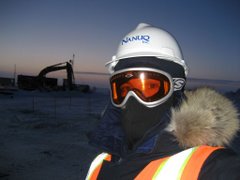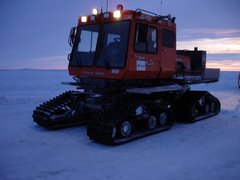This past week has been a bit more on the work/research side of things but I was still able to get out for some fun over the weekend. Saturday evening I was out with the post doc I work for and his lovely wife (Dr. Tetsuo Tobita and Mrs. Satoko Tobita). We had quite a bit of fun walking through the Gion district in Kyoto, which is the most well known Geisha district in Japan, on our way out for a Korean BBQ dinner. As it turns out many tourists line up and down the street to snap pictures as the Geisha go off to various restaurants in the early evening. Unfortunately I forgot to bring my camera so I have no Geisha photos to share. I was especially sorry as I could swear that one of the Geisha I saw was featured in a Discovery Channel special on the subject I happened to see this past Spring. My hosts found this very funny and were rightfully inclined not to believe me. Ah well, such is the life of an American tourist.
Sunday I made my way by two trains up to the village of Kurama which is located in the hills (roughly 600 meters in height) North of Kyoto. The two main attractions were the Kurama-dera temple and the Kurama-onsen (hot springs). Kurama-dera temple is built into a hillside and is comprised of long trails that connect the main hall, museum, and many small shrines dating back to 770 A.D. The monks there practice there own style of Buddhism called, aptly enough, Kuram-kyo. The hills are heavily wooded, rutted with streams, and with summer in full swing are absolutely beautiful. I hiked up to the main hall and arrived in time for what I think amounts to afternoon prayers. I guess Buddhists prefer toworship on Sunday as well. I don’t know much about Buddhism but I was certainly affected by being surrounded by the low hum of monotonic chant at the main hall and practically everywhere else I walked in the temple complex. Had I had my wits about me I would have pulled out the digital camera, put it on video mode, and recorded the sound of it all; next time perhaps.
The favorite Kyotoite thing to do (or so my guide book tells me) after visiting the temple is to hit the local onsen or “hot spring” in our vernacular. For a reference most onsen in Japan seem to resemble the type found in Steamboat Springs, Colorado i.e. it’s a natural spring but they’ve built a large building complex around it. Japanese onsen differ in that there are separate baths for men and women. Yep, you guessed it; the only suit you need is the one you got on your birthday; when in Rome right! Interesting thing that; it seems that I was a bit harrier than every other male at the bath and drew some pretty funny stares. Even funnier were the little tikes that would run and hide behind their fathers when I came walking out of the locker room. Most folks seemed pretty friendly though and I found the whole experience to be very relaxing. The best part of course was the Swedish component to the bath; get out of the blisteringly hot spring and jump in to the adjacent ice cold bath. Zoinks! Sorry though folks; no pics from the hot spring.
The train ride back turned in to quite a bit of fun when some fellow tourists asked me to snap a photo for them. One of them turned out to be a former Japan Exchange and Teaching (JET) program employee from Wexford County, Ireland. Ms. Mary Green was on the last day of her holiday in Kyoto after having been absent from Japan for eight years. We chatted up a stormand she was kind enough to relate stories of the Kobe earthquake that occured during her last year in the JET program. Why is it that most of the teachers I meet are so darned nice?That’s all for now.
Hope everyone is diggin’ life. Take care.
Matt

Kurama-dera Shrine, Kurama, Japan, July 2003

Dragon Hand Washing Station, Kurama, Japan, July 2003

Tall Tree Torii (Gate), Kurama, Japan, July 2003

Drainage Channel, Kurama, Japan, July 2003












